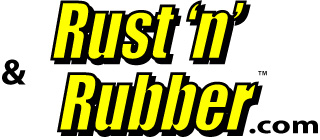|
Rigging Maintenance Guide (page 2)
Insurance companies are now starting to recognise these potential
problems and are starting to insist on regular inspections and
maintenance. Can you convince them that you have a regular maintenance
schedule? Ask yourself these questions?
-
When was the rig last inspected?
-
Are there any signs of rust on the wire rope?
-
Are there any signs of rust on the fittings?
-
Are there any broken strands of wire in the rope?
-
Are the wires tensioned properly? (Strain gauges are available form other
manufactures)
-
Are chain plates inspected or are they out of sight out of mind?
If the answer to any one of these is yes then you need to inspect,
overhaul or replace the items concerned.
You should never use ordinary lubricants on standing rigging as they
will not prevent salt water penetration into fittings only Rigging Guard
can prevent water ingress. If you do use ordinary grease or lubricants
you could be speeding up the corrosion process by introducing unwanted
chemicals that will react with the stainless steel and salt water.
<-- Previous Page |



